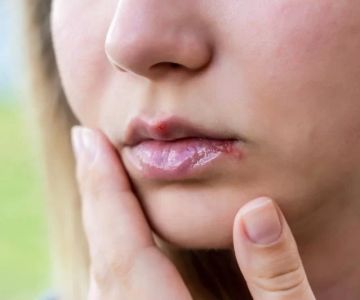
Understanding Gingivitis: How to Prevent and Treat It for Healthier Gums
Several years ago, I experienced the unsettling reality of gingivitis—a condition I had no idea could develop so quickly. One day, while brushing my teeth, I noticed that my gums were bleeding, especially after brushing. It was the first sign that something wasn’t right, and little did I know, that small symptom was the beginning of a larger issue: gingivitis. Since then, I’ve learned a lot about this common yet preventable condition. So, if you’re dealing with or want to avoid gingivitis, let me walk you through what it is, how to prevent it, and the best ways to treat it. After all, healthy gums are key to a healthy smile.
What is Gingivitis?
Gingivitis is a mild form of gum disease (periodontal disease) that causes irritation, redness, and swelling (inflammation) of your gingiva, the part of your gum around the base of your teeth. It’s mainly caused by poor oral hygiene that encourages plaque to form on teeth, leading to inflammation of the surrounding gum tissue. If left untreated, gingivitis can advance to more serious gum disease, which can cause teeth to become loose or even fall out. However, the good news is that gingivitis is entirely reversible with proper dental care.
As I discovered, gingivitis often starts subtly. For me, it was the bleeding gums after brushing. But other symptoms like red, swollen gums and persistent bad breath can also indicate the presence of this condition. Understanding the symptoms is key to catching gingivitis early and preventing it from progressing into something more severe.
What Causes Gingivitis?
The primary cause of gingivitis is the buildup of plaque on your teeth. Plaque is a sticky film of bacteria that forms on your teeth when you eat or drink sugary foods. If you don’t brush and floss regularly, the bacteria in plaque can cause irritation and inflammation of the gums, leading to gingivitis. In my case, I had fallen behind on regular dental cleanings and had not been brushing as thoroughly as I should have. Plaque had slowly built up, and before I knew it, my gums were inflamed.
In addition to poor oral hygiene, several other factors can contribute to the development of gingivitis, including:
- Poor nutrition, especially a lack of vitamin C
- Smoking or chewing tobacco
- Dental restorations that don't fit properly or don't work well
- Certain diseases, such as HIV/AIDS or cancer treatment, that can affect the immune system
- Medications that reduce the flow of saliva
- Conditions such as certain viral and fungal infections
How to Prevent Gingivitis
The good news is that preventing gingivitis is relatively simple and involves maintaining good oral hygiene habits. As soon as I made some changes to my routine, I saw significant improvements in my gum health. Here are some steps you can take to prevent gingivitis:
1. Brush Your Teeth Regularly
Brushing your teeth twice a day with a fluoride toothpaste is one of the most effective ways to prevent gingivitis. I found that using a soft-bristled toothbrush helped prevent irritation to my gums while effectively removing plaque. Make sure to brush for at least two minutes, and don’t forget to brush your tongue too, as it can harbor bacteria.
2. Floss Daily
Flossing might not always seem like an essential part of oral care, but it’s crucial in preventing gingivitis. Flossing removes plaque and food particles that your toothbrush can’t reach, especially between your teeth and under the gumline. When I started flossing regularly, I noticed a huge difference in how clean my mouth felt and how much healthier my gums looked.
3. Use Mouthwash
Incorporating a mouthwash into your daily routine can also help reduce plaque and gingivitis. Mouthwash can reach areas that brushing and flossing might miss, providing an additional layer of protection against gum disease. I personally use an antimicrobial mouthwash to help kill bacteria in my mouth and keep my gums healthy.
4. Eat a Balanced Diet
Eating a balanced diet rich in vitamins and minerals—particularly vitamin C—can support gum health and prevent gingivitis. I made sure to incorporate more fresh fruits and vegetables into my diet, which not only helps with overall health but also gives my gums the nutrients they need to stay strong and healthy.
5. Avoid Smoking
Smoking is a major risk factor for gum disease, as it weakens your immune system and makes it harder for your gums to heal. I made the decision to quit smoking, and my gum health improved significantly as a result. If you’re a smoker, consider quitting to help reduce your risk of gingivitis and other dental problems.
Treating Gingivitis: What to Do If You Already Have It
While prevention is key, sometimes gingivitis can sneak up on you. If you notice the early signs of gum inflammation, like bleeding while brushing, don’t panic—gingivitis is treatable with proper care. Here’s what I did to get my gums back to good health:
1. Visit a Dentist for Professional Cleaning
One of the first things I did when I noticed signs of gingivitis was schedule a professional cleaning with my dentist. Even if you’re diligent about brushing and flossing, plaque can build up in places that are hard to reach on your own. A dental hygienist can remove this plaque and tartar, which is crucial in stopping the progression of gingivitis. I highly recommend visiting your dentist for regular cleanings to keep your gums and teeth in top condition.
2. Practice Good Home Care
While professional cleanings are essential, home care is just as important. Keep up with brushing, flossing, and using mouthwash as recommended by your dentist. If you already have gingivitis, it’s crucial to follow a strict oral care routine to help reduce plaque buildup and speed up the healing process.
3. Consider Antibacterial Treatments
If your gingivitis is more advanced, your dentist may recommend antibacterial treatments or medicated mouthwashes. These can help eliminate bacteria in your mouth and reduce gum inflammation. In my case, my dentist suggested using a prescription mouthwash that contained chlorhexidine to help fight the bacteria causing my gingivitis.
4. Follow Up with Your Dentist
After my initial treatment, I made sure to follow up with my dentist regularly. Continued monitoring of my gum health helped ensure that the gingivitis didn’t return. If you’re treating gingivitis, follow your dentist’s instructions carefully and return for check-ups as needed.
Maintaining Healthy Gums for the Long Term
After successfully treating my gingivitis, I’ve made it a priority to maintain good oral hygiene habits. Keeping my gums healthy requires consistent effort, but it’s well worth it. Healthy gums not only protect your teeth but also play a crucial role in your overall health. Research has shown that gum disease can be linked to other health conditions, such as heart disease and diabetes, so it’s important to take care of your gums for long-term well-being.
If you’re dealing with gingivitis or simply want to maintain healthy gums, remember that the key is regular dental care. By brushing, flossing, and visiting your dentist regularly, you can keep gingivitis at bay and enjoy a healthier smile for years to come.
For more information or personalized recommendations on how to treat or prevent gingivitis, visit Dentistry Toothtruth for expert advice and help finding the best dental services in your area.







 Banyan Dental Care4.0 (90 review)
Banyan Dental Care4.0 (90 review) Tebo Orthodontics Cumming5.0 (4 review)
Tebo Orthodontics Cumming5.0 (4 review) Dr. Kenneth J. Kalil0.0 (0 review)
Dr. Kenneth J. Kalil0.0 (0 review) East Valley Periodontics4.0 (993 review)
East Valley Periodontics4.0 (993 review) Yonkers Family Dentist : Sachar Bhupinder DDS4.0 (47 review)
Yonkers Family Dentist : Sachar Bhupinder DDS4.0 (47 review) Devon Dental Associates4.0 (61 review)
Devon Dental Associates4.0 (61 review) The Importance of Oral Health Education During Pregnancy for a Healthy Pregnancy
The Importance of Oral Health Education During Pregnancy for a Healthy Pregnancy Best Tips for Brushing Your Teeth Properly for Healthy Gums: Essential Techniques for Oral Health
Best Tips for Brushing Your Teeth Properly for Healthy Gums: Essential Techniques for Oral Health Why Skipping Dental Checkups Can Lead to Bigger Oral Health Problems
Why Skipping Dental Checkups Can Lead to Bigger Oral Health Problems Advantages of Porcelain Dental Restorations
Advantages of Porcelain Dental Restorations How Can Diabetes Cause Tooth and Gum Problems? Preventing and Managing Oral Health Issues
How Can Diabetes Cause Tooth and Gum Problems? Preventing and Managing Oral Health Issues Healthy Habits for Promoting Good Oral Health and Hygiene: Tips for a Healthy Smile
Healthy Habits for Promoting Good Oral Health and Hygiene: Tips for a Healthy Smile